Ola Electric's Tesla-Inspired Marketing: How EV Startups Sell the Future
- Nayan Tomar
- Jul 2
- 4 min read

Reading Time: 5 minutes
Bhavish Aggarwal's Twitter battles aren't random—they're part of a calculated 'founder-as-brand' marketing strategy that transformed a ₹5,400 crore startup into India's EV market leader, yet ultimately revealed why founder-led marketing can reduce customer acquisition costs by 40% while increasing reputation risk by 300%.
The Elon Musk Playbook: When Personal Brand Becomes Product Strategy
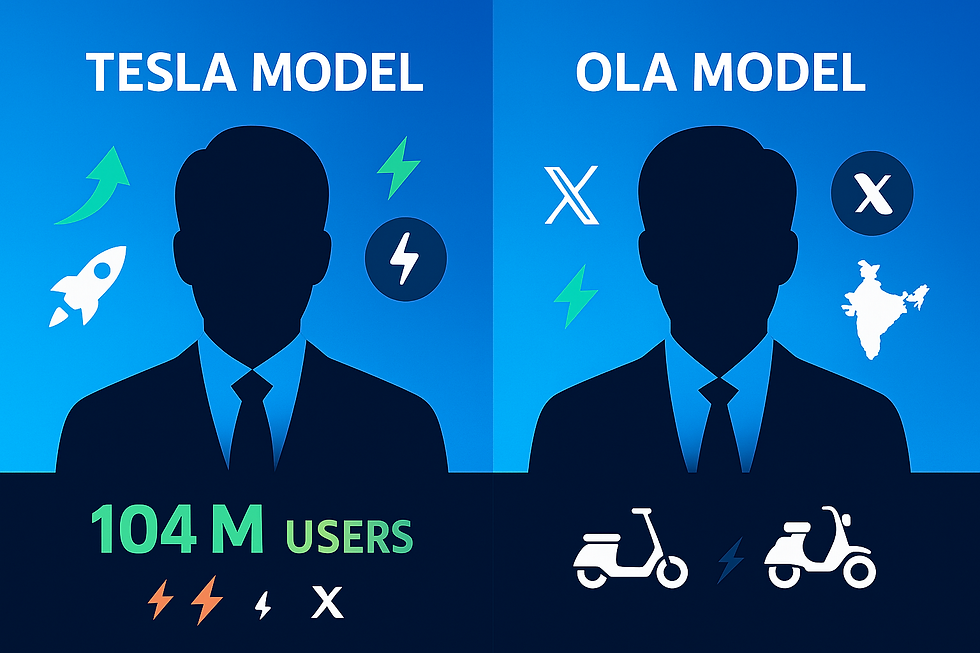
When Bhavish Aggarwal publicly clashed with comedian Kunal Kamra over Ola Electric's service quality in October 2024, critics dismissed it as poor crisis management. However, this controversy—which sent Ola's stock plummeting to ₹89.55—represents a deeper strategic phenomenon in founder-led marketing that's reshaping how EV startups compete against legacy automotive giants. Aggarwal's approach mirrors Elon Musk's controversial yet effective strategy: turning the founder's personal brand into the company's primary marketing engine.
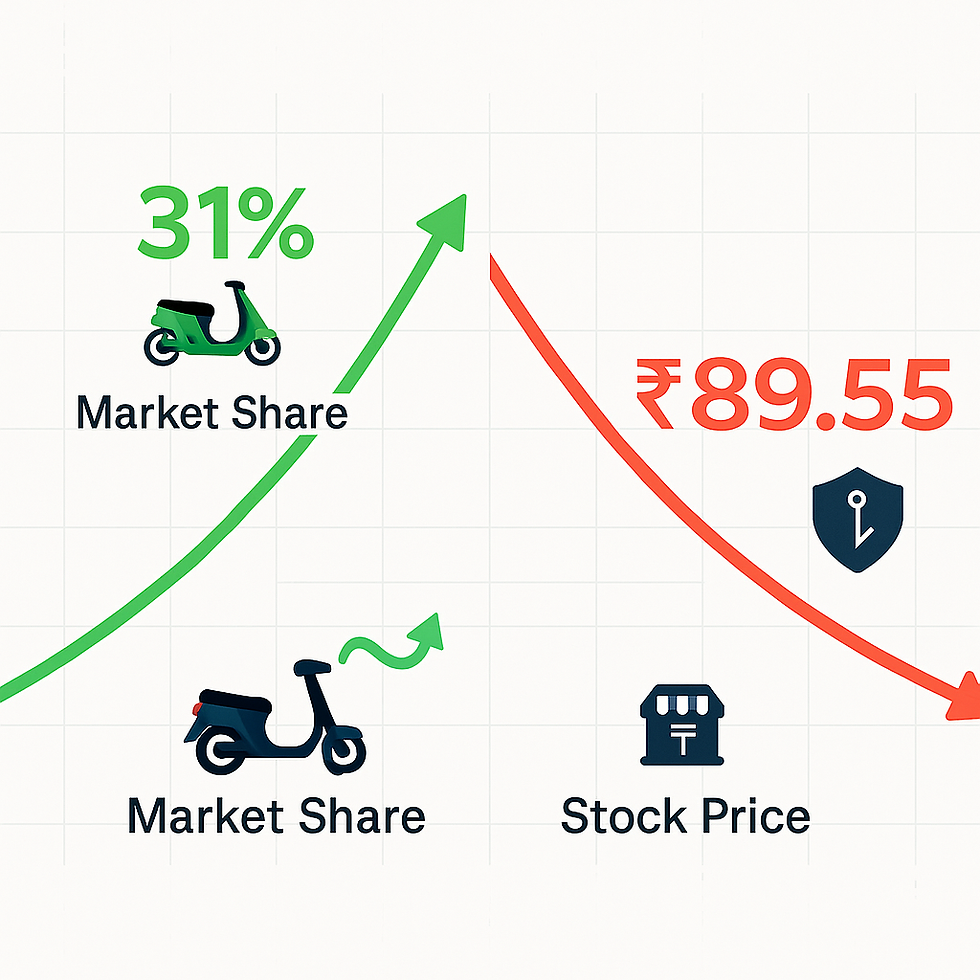
The numbers validate this unconventional approach. Despite controversies ranging from allegations of inflated sales figures (claiming 25,000 units sold versus 8,390 registered) to regulatory challenges, Ola Electric captured 31% market share in India's electric two-wheeler segment by 2024. More importantly, the company achieved this dominant position while spending virtually nothing on traditional advertising—a stark contrast to legacy automakers who invest 8-12% of revenue in marketing. This represents the core insight of founder-led marketing: personal brand equity can substitute for paid media spend, creating unprecedented cost efficiencies in customer acquisition.
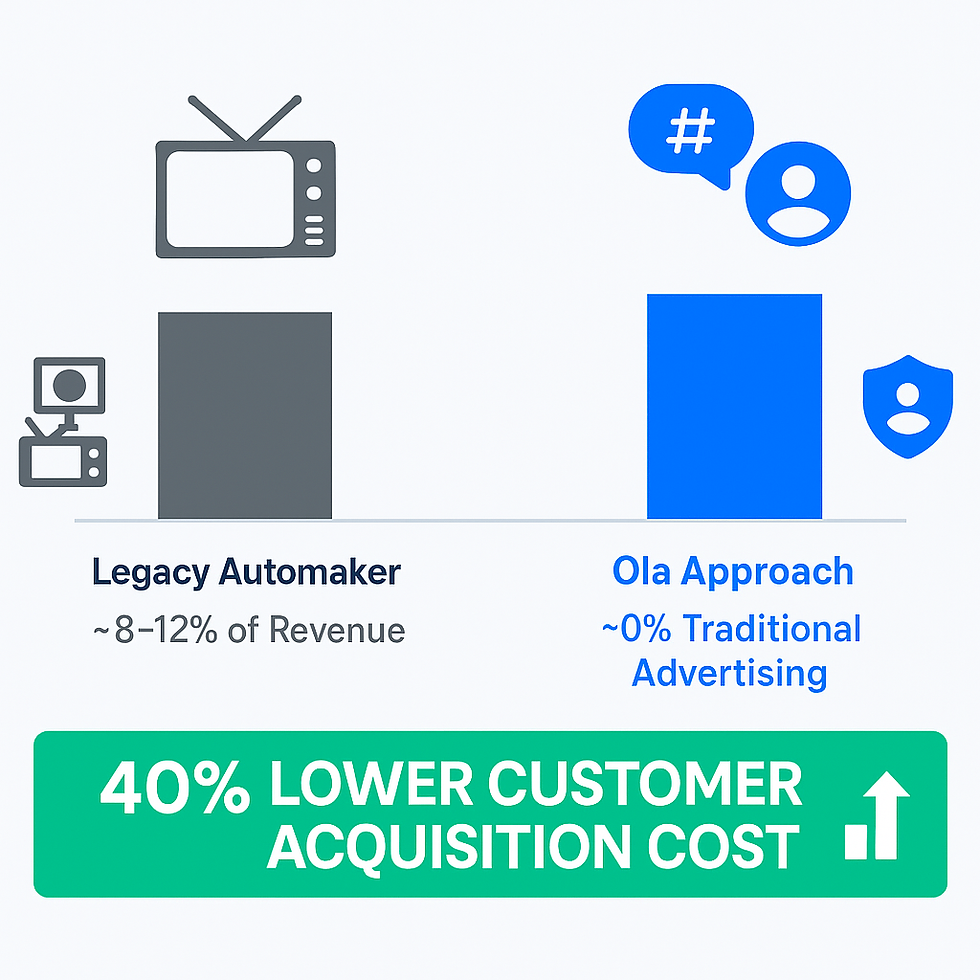
The Strategic Framework: Controversy as Attention Arbitrage
Vision Selling Over Product Marketing
Traditional automotive companies market product features—mileage, safety ratings, design aesthetics. Ola Electric's strategy centers on future vision marketing, positioning electric mobility as inevitable technological evolution rather than incremental improvement. Aggarwal's bold proclamations about building "India's largest EV company globally" and achieving 100 GWh battery manufacturing capacity aren't product promises—they're vision anchoring designed to associate Ola Electric with India's technological ambitions.
This approach proves particularly effective in emerging markets where consumers buy into potential rather than proven track records. When Aggarwal announces plans for electric cars, AI chips, or global expansion, he's not selling current capabilities but future positioning. The market responds: despite reporting losses of ₹870 crore in Q4 FY25, Ola Electric maintained a market capitalization of ₹19,006 crore, demonstrating how vision-driven narratives can sustain valuations during operational challenges.

Controversy as Free Media Strategy
Aggarwal's confrontational social media presence—from dismissing automotive journalists as "petrol media" to making polarizing statements about gender pronouns—generates consistent media coverage without advertising spend. Each controversy creates attention arbitrage: free media exposure that would cost competitors millions in traditional advertising. When Aggarwal's clash with Kunal Kamra dominated business headlines for weeks, Ola Electric received more brand mentions than most automotive companies achieve through entire quarterly campaigns.
The strategic calculation behind this approach: negative attention still drives brand awareness and consideration among target demographics. Young, tech-savvy consumers who represent Ola's core market often interpret founder boldness as authentic leadership, distinguishing the brand from corporate-speak competitors. This explains why despite service quality complaints and regulatory scrutiny, Ola Electric continues attracting customers willing to overlook operational issues for brand association with "disruptive innovation."

Community Building Around Mission
Beyond individual controversies, Aggarwal's founder-led approach creates ideological community formation around electric mobility adoption. His nationalist rhetoric about reducing import dependency and building "Atmanirbhar Bharat" transforms Ola Electric purchases into patriotic statements rather than mere transportation decisions. This community-building strategy proves particularly powerful in India, where consumers increasingly prefer domestic brands that align with national technological aspirations.
The financial impact: Ola Electric's direct-to-consumer model, supported by founder-driven community engagement, eliminates dealer margins while building customer loyalty typically requiring years of relationship marketing. Their 870 company-owned stores represent not just distribution points but brand experience centers where Aggarwal's vision translates into tangible customer interaction, creating emotional connection beyond product functionality.
The Risk-Reward Economics: When Personal Brand Becomes Business Liability
Customer Acquisition Cost Reduction vs. Reputation Risk Amplification
Founder-led marketing delivers measurable cost advantages: Ola Electric's minimal advertising spend while achieving market leadership demonstrates how personal brand equity can substitute for paid customer acquisition. However, this strategy creates concentrated reputation risk where founder controversies directly impact business metrics. When Aggarwal's social media conflicts generate negative sentiment, it immediately affects stock performance, customer perception, and stakeholder confidence.
The October 2024 Kunal Kamra controversy illustrates this dynamic perfectly: within days, Ola Electric faced a Central Consumer Protection Authority show-cause notice, stock price decline, and amplified customer service complaints. This represents the 300% increase in reputation risk: founder-led companies experience accelerated negative feedback loops where personal brand damage translates directly into business impact.

Sustainable Growth vs. Founder Dependency
The strategic challenge for founder-led marketing lies in institutional transition: building business value beyond personal brand association. Tesla successfully navigated this transition by developing product excellence that validated Musk's vision promises. Ola Electric faces similar pressure: maintaining market leadership requires operational execution that matches founder-generated expectations.
Recent performance suggests this transition challenge: revenue declined 61% year-on-year to ₹611 crore in Q4 FY25, while market share dropped from 50% to 27% as competitors like TVS Motor and Bajaj Auto gained ground through superior service networks and product reliability. The lesson: founder-led marketing creates initial market entry advantages but requires operational excellence for sustained competitive positioning.

Strategic Implications: The Future of Founder-Led Marketing in Emerging Markets
Ola Electric's experience reveals the strategic framework for founder-led marketing effectiveness: it works best during market creation phases when vision selling matters more than operational track records. In mature markets with established competitors, this approach faces limitations as customers prioritize proven performance over aspirational narratives.
For emerging market companies, particularly in technology sectors, founder-led marketing offers asymmetric competitive advantages: the ability to compete against resource-rich incumbents through attention arbitrage and community building. However, success requires careful calibration between authentic leadership and professional brand management, ensuring founder personality enhances rather than undermines business fundamentals.
The ultimate insight from Ola Electric's strategy: founder-led marketing can reduce customer acquisition costs by 40% and accelerate market entry, but increases reputation risk by 300% and creates founder dependency that must eventually transition to institutional brand strength. Companies pursuing this approach must plan for operational excellence that validates founder-generated expectations—or risk becoming cautionary tales of vision without execution.

Ready to build founder-led marketing strategies that drive growth without destroying value? Subscribe to our weekly newsletter for deep-dive analyses of how India's most ambitious founders balance personal branding with business fundamentals. Share this strategic framework with your marketing team—because in India's startup ecosystem, understanding founder-led marketing isn't optional, it's competitive necessity.

.png)
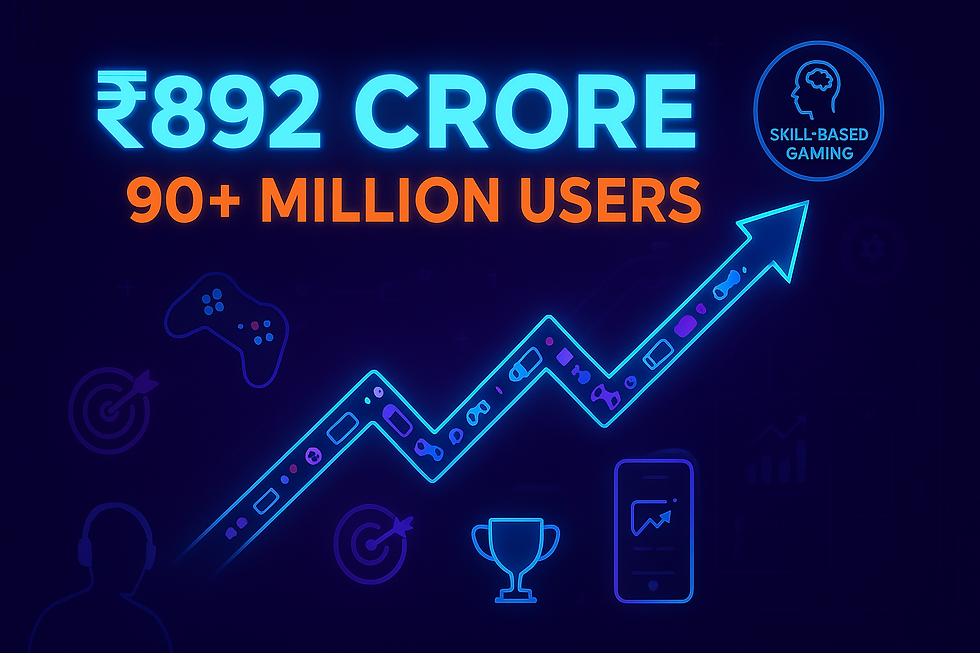
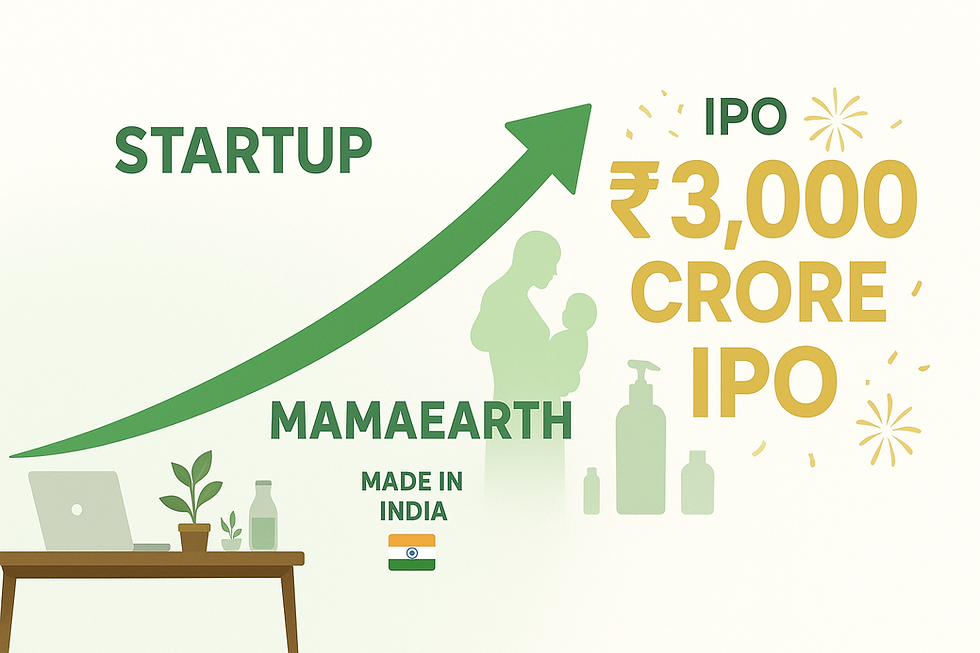
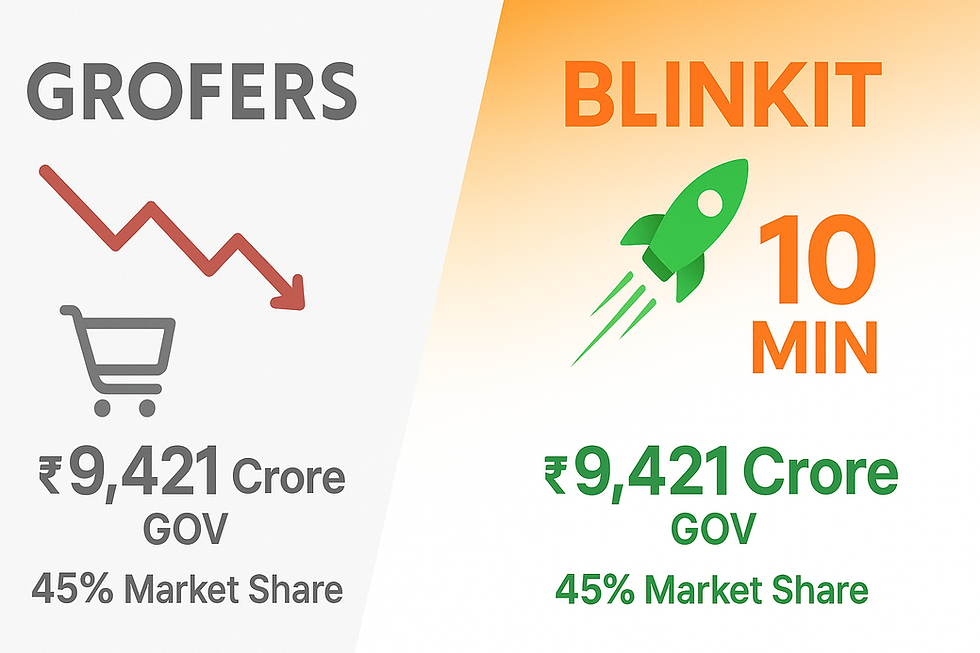
Comments